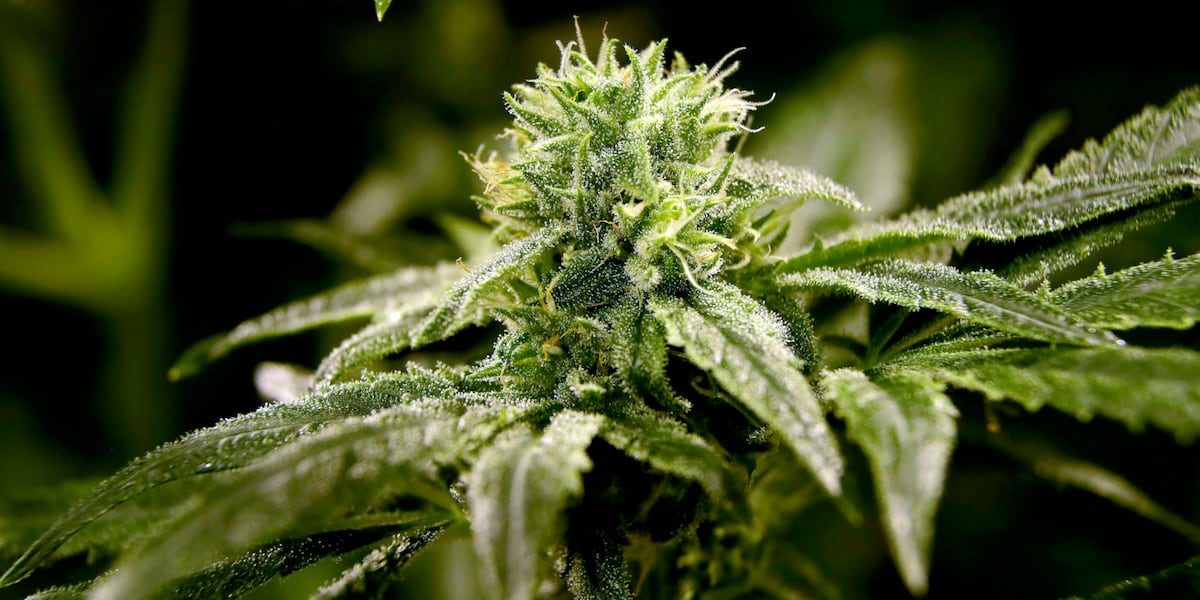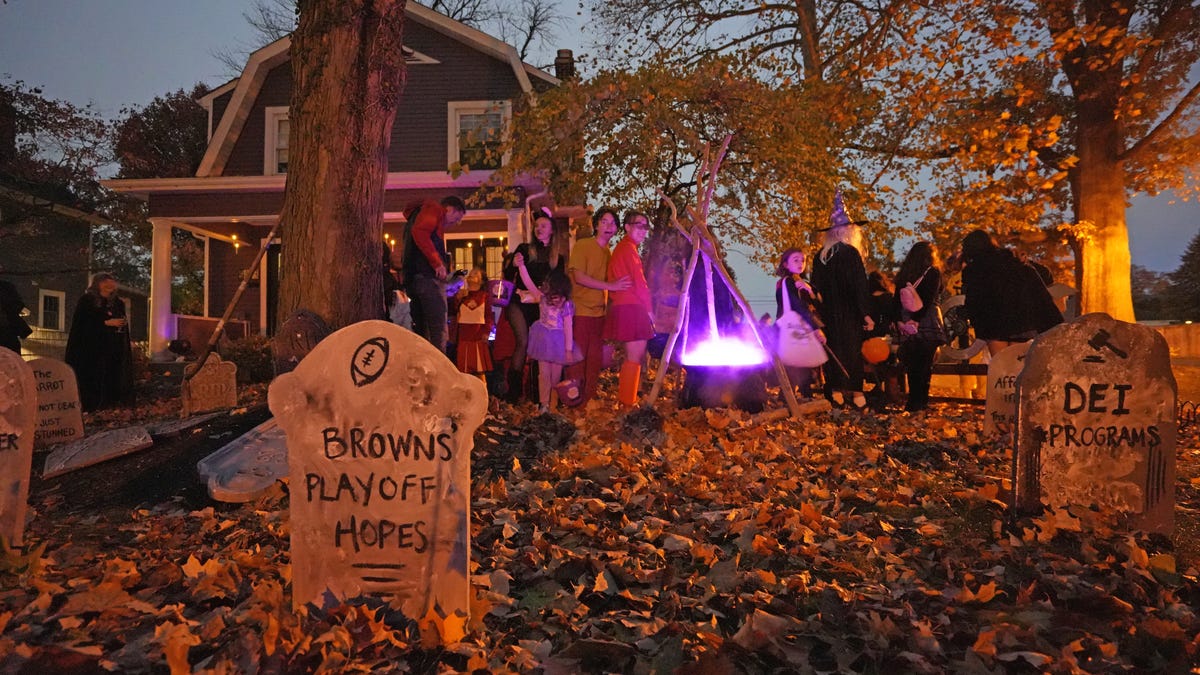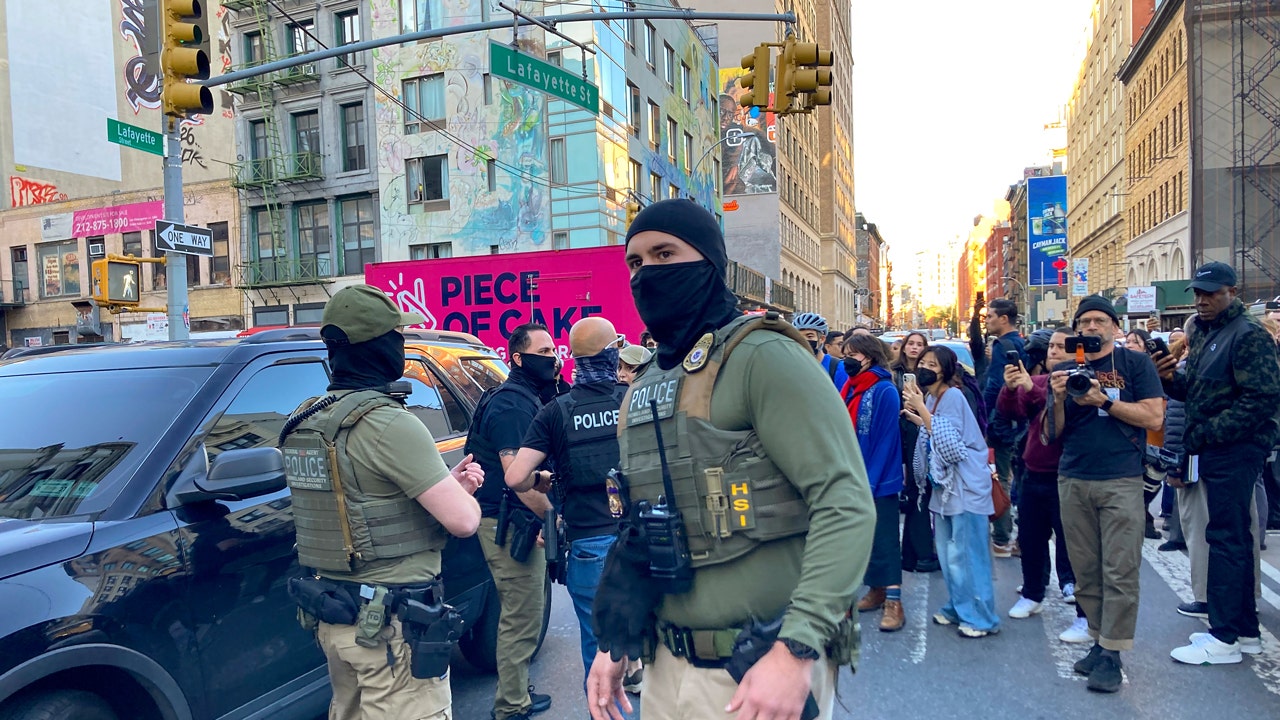Ohio
Students, professors speak against Ohio bill that would create ‘intellectual diversity’ centers

The following article was originally published in the Ohio Capital Journal and published on News5Cleveland.com under a content-sharing agreement.
University of Toledo law students and Ohio State University professors spoke out in opposition against a bill that would create new centers at both universities that would expand and affirm what sponsors deem “intellectual diversity.”
Senate Bill 117 would create the Salmon P. Chase Center for Civics, Culture, and Society at Ohio State University and the Institute of American Constitutional Thought and Leadership at the University of Toledo’s College of Law.
Eleven people submitted opponent testimony and there was one interested party for SB 117 at Wednesday’s Senate Workforce and Higher Education Committee meeting. There was little questioning from the five-person committee.
The bill was introduced by Sen. Rob McColley, R-Napoleon, and Sen. Jerry Cirino, R-Kirtland, who also introduced a massive higher education bill that would overhaul college campuses that recently passed in the Senate.
SB 117 would give UT $1 million in fiscal year 2024 and $2 million in fiscal year 2025 for the Institute, and Ohio State $5 million in fiscal years 2024 and 2025 for the Center.
$5 million during those two years could pay Ohio State’s full in-state tuition costs for 400 students each year of the biennium, said Steve Mockabee, an associate professor at the University of Cincinnati, speaking on behalf of the Ohio Conference American Association of University Professors.
“At a time when college affordability is a significant concern for Ohio families, we owe it to Ohioans to be sure that funds allocated by the legislature are being spent in ways that maximize their positive impact,” he said.
“We remain deeply concerned that attempts by the General Assembly to override the autonomy of our colleges and universities will have many unintended consequences that damage, not enhance, the climate of free inquiry on our campuses and the quality of education that is offered to our students.”
University of Toledo’s College of Law
UT Law Professor Lee Strang first got the idea for the institute in 2019 and sees this not only as a way to better train future lawyers, but also as a recruiting tool for the university.
But three UT students don’t see it that way.
Megan Anderson, a third year UT law student, said she wouldn’t have picked UT if the proposed institution was in place. She called the proposed center “a subtraction from our current law school” and said she has talked to others students who have ruled out UT for law school because of this bill.
“Why would the pure existence of this center turn off a student in the first place?” asked Cirino, one of the bill’s sponsors and chair of the Senate Workforce and Higher Education Committee.
Anderson said students go to law school to make the world a better place and “this institution is not helping with that.”
“It’s not real-world practical experience that I think a lot of students are seeking out when looking for a law school,” she said.
She said UT Law School funding has been on the decline — meaning fewer professors and less courses being offered.
“The narrowly pointed focus of SB 117 fails to address the areas of law where we face significant shortages in specialized professors, such as family law, criminal law, administrative law, and estate law,” Anderson said.
She also worries the College of Law will be forced to absorb funding for the institute once the initial money runs out.
“I think it would require resources that we just don’t have,” she said. “We are running low on classrooms. I’ve taken several classes in the auditorium because the classes are so big they don’t fit into the classrooms.”
Benjamin Noah Woods, a third year UT law student, said the institute would not prepare students for the bar exam, which students must pass in order to practice law.
“This is going to teach us indoctrination of conservative, Christian nationalist interpretations of our Constitution,” he said.
Thirty-four percent of University of Toledo students passed the bar in February and 61% passed in July.
Clifton Porter, a third year law UT law student, said SB 117 is an “unnecessary and frivolous use of state funds.”
He also criticized the language of the bill and the bill’s sponsors for not defining the term “intellectual diversity,” which is used throughout the bill.
“I find this to not only be sloppy, but incredibly dangerous,” he said.
Ohio State University
Richard Fletcher, an associate professor at Ohio State, said SB 117 is a “destructive power grab” to control what is being taught at universities and by whom.
“Here we have arrived at the endgame — universities being told what they can teach and how they should teach,” he said. “Yet it is the students who suffer when their education is gerrymandered in this way.”
The Salmon P. Chase Center would be an independent academic unit and would have a director that would report directly to the provost and university president.
Ohio State already has more than 70 centers, and Christopher Nichols, a history professor at Ohio State, said the Chase Center resembles a small department, school or college.
“What it does not look like as proposed is anything approximating a center or institute as they currently operate at OSU in the social sciences or liberal arts,” he said. “It also would not operate in keeping with how the vast majority of centers and institutes work on virtually all U.S. campuses.”

Ohio
THC gummies recalled in Ohio for not being properly marked

CLEVELAND, Ohio (WOIO)- The Ohio Division of Cannabis Control has issued a product recall for edible gummies made by Green Investment Partners, LLC.
The Division investigated a complaint that the affected gummies were not marked with a universal THC symbol on each serving.
The Division’s rules require the universal THC symbol on each serving; therefore, the products are not compliant.
The Division has placed a hold on all affected gummy products so that no additional products are distributed to or sold at dispensaries.
No adverse events have been reported. Anyone who experiences adverse health effects after consuming the affected product should contact their health care provider immediately and report the event to the DCC at 1-833-464-6627. The DCC will provide any updates, as necessary.
AFFECTED PRODUCT:
Product Name:
O’Dank Cannabis Infused Gummies – Pineapple
O’Dank Cannabis Infused Gummies – Sour Watermelon
Purchase Dates: September 5, 2025, to present
Processor Name: Green Investment Partners, LLC (License# CCP000024-00)
Product ID and Batch:

Affected Product Sold at the Following Dispensaries:

Copyright 2025 WOIO. All rights reserved.
Ohio
Ohio State’s defense is already elite, but these two players could make it even better

COLUMBUS, Ohio — Ohio State’s defense has been nothing short of dominant this season, but what’s scary for future opponents is that it might be on the verge of getting even better.
The latest episode of Buckeye Talk revealed two fascinating developments that could transform an already-elite unit into something truly unstoppable.
The first involves what Stephen Means described as “the ultimate good problem” at the nickel position. While Lorenzo Styles has been solid, Jermaine Mathews has shown flashes of being an elite playmaker who can dramatically change games with his ability to create turnovers.
“This is, I think, the ultimate good problem that a defense could have — where the guy who’s doing a job isn’t doing it poorly, but there just might be a guy who is elite, elite, elite at it,” Means said.
The option between Styles and Mathews represents the luxury Ohio State now has – two excellent players for one position, with Mathews offering a specific skill set that addresses one of the few areas where the defense could improve: creating more takeaways.
Co-host Stefan Krajisnik emphasized Mathews’ impact:
“I just think he’s such a difference-maker for you that if that’s the one thing you feel like this defense is lacking… I would continue to give Jermaine Mathews some snaps there in the slot.”
But perhaps the most intriguing revelation came from defensive end Kenyatta Jackson, who approached defensive coordinator Matt Patricia about being allowed more freedom as a pass rusher.
Jackson, who has been disciplined in his containment responsibilities against mobile quarterbacks, wanted permission to use his full arsenal of pass-rush moves.
Means highlighted the significance of this conversation:
“I also love the fact that he said that Matt Patricia’s response was like, ‘Yeah, just don’t go past quarterback… You can do whatever you want as long as you don’t put us at a disadvantage.”
This context explains why Jackson hasn’t been as statistically productive as many expected. Against more traditional pocket passers, Jackson could now be unleashed, complementing Caden Curry (who’s putting up numbers comparable to Chase Young’s Heisman campaign start) and creating a truly terrifying pass rush.
What we witnessed against Wisconsin – where Jackson registered three pressures and a sack after this conversation with Patricia – might just be the beginning. Ohio State’s defense is already allowing a minuscule 5.9 points per game, but these adjustments suggest the best is yet to come.
Here’s the podcast for this week:
If you purchase a product or register for an account through a link on our site, we may receive compensation. By using this site, you consent to our User Agreement and agree that your clicks, interactions, and personal information may be collected, recorded, and/or stored by us and social media and other third-party partners in accordance with our Privacy Policy.
Ohio
What’s Up With That? Why isn’t trick or treating always on Halloween?

Halloween safety tips for fun and safe trick-or-treating
Safety is key to enjoying Halloween festivities. The FDA and CDC offer these tips for costumes, candy and trick-or-treating to keep you safe this year.
Why do central Ohio communities trick or treat on nights other than Halloween?
This week’s What’s Up With That? is a personal one, as it’s a query I’ve had since I moved to Columbus nearly seven years ago. What’s the origin of central Ohio’s complex (to outsiders) tradition of holding trick or treating (or Beggars Night, as some call it) on nights other than Oct. 31?
It is a question that has been asked and answered by The Columbus Dispatch before. But to save you a journey through our archives, I’ll recap the history here.
Why does central Ohio schedule trick-or-treating on nights other than Halloween?
Up until 2005, when the Mid-Ohio Regional Planning Commission adopted the current system for recommending when communities should hold trick-or-treating, Columbus hadn’t held the event on Halloween itself in 90 years, according to past Dispatch reporting.
Columbus historically held a raucous Downtown Halloween party on Oct. 31, according to our archives, prompting the preference for Oct. 30 as the day kids could collect candy. That party was discontinued in the 1950s over too much revelry, but Oct. 30 trick-or-treating persisted.
MORPC took on its role as trick-or-treat scheduler in 1993 and adopted the current system it uses to choose the date in 2005. MORPC’s recommendation is just that; communities are still free to set their own trick-or-treating days and times.
When is central Ohio trick-or-treating in 2025?
Here’s MORPC’s system: When Halloween falls on a Friday, Saturday or Sunday, trick or treat typically takes place the Thursday before Oct. 31 in central Ohio. When Halloween falls on a Monday, Tuesday, Wednesday or Thursday, expect costumed kids on the day itself.
In 2015, a MORPC spokesman told the Dispatch the system was meant to increase convenience for families. Friday or Saturday night trick or treating could conflict with football (as could Sunday, for that matter, although in central Ohio it’s largely the first two putting a dent in people’s calendars).
Since Halloween falls on a Friday this year, the recommended trick-or-treat date is Oct. 30, and cities and towns have official candy-calling hours of 6-8 p.m.
But there are exceptions. Here’s a look at which Franklin County communities are going their own way:
- Bexley: 5:30 to 7 p.m. Oct. 30
- Grandview Heights: 6 to 8 p.m. Oct. 31
- Groveport: 5:30 to 7 p.m. Oct. 30
- Madison Township: 5:30 to 7 p.m. Oct. 30
- Worthington: 6 to 8 p.m. Oct. 31
You can see other communities’ hours in this list we published in early October.
Have a question about Columbus? I’ll find your answer
What other weird central Ohio traditions would you like to have explained? I’m happy to track down the information. Or just curious what that development is, or why the traffic pattern you hate is the way it is?
Email ekennedy@dispatch.com and I will see what I can do.
Eleanor Kennedy is the senior digital director of the Columbus Dispatch. She can breached at ekennedy@dispatch.com.
-

 World2 days ago
World2 days agoIsrael continues deadly Gaza truce breaches as US seeks to strengthen deal
-

 News2 days ago
News2 days agoTrump news at a glance: president can send national guard to Portland, for now
-

 Technology2 days ago
Technology2 days agoAI girlfriend apps leak millions of private chats
-

 Business2 days ago
Business2 days agoUnionized baristas want Olympics to drop Starbucks as its ‘official coffee partner’
-

 Politics2 days ago
Politics2 days agoTrump admin on pace to shatter deportation record by end of first year: ‘Just the beginning’
-
Science2 days ago
Peanut allergies in children drop following advice to feed the allergen to babies, study finds
-

 News23 hours ago
News23 hours agoBooks about race and gender to be returned to school libraries on some military bases
-

 Politics19 hours ago
Politics19 hours agoHunter Biden breaks silence on pardon from dad Joe: ‘I realize how privileged I am’















